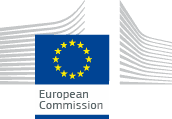PROJECT DESCRIPTION
BACKGROUND
The Wadden Sea area is of international importance for birds and, at the same time, is densely populated and vulnerable to elevated water levels due to climate change. Six main threats have been identified in Natura 2000 baseline studies and national surveys for bird species and their habitats in poor conservation status in the Danish and German Wadden Sea area. These are: 1) Poor hydrology and severe drainage problems due to intensive agricultural activity, which limits the occurrence of suitable breeding, foraging, and wintering habitats for the bird species; 2) Lack of breeding, feeding and wintering grounds due to intensive agriculture and overgrowth; 3) Predation impacts on the birds breeding success; 4) Eutrophication and poor soil structure, which limits development of appropriate feeding grounds, due to the dominance of nitrophilous plant species and algae at the expense of low-growing plant species; 5) Lack of multifunctionality, and the need for an approach that takes into account both densely-populated human settlements and seabird populations, for example, conserving bird habitat combined with stormwater storage to reduce flooding risk; and 6) Lack of knowledge of the Natura 2000 and the ecosystem services it provides among local people.
OBJECTIVES
The LIFE Wadden Sea Birds project aims to counteract six identified threats to birds and their habitats in the Danish and German Wadden Sea area. Actions will focus on two Natura 2000 sites in the Wadden Sea Marsh in the Atlantic biogeographical region with a focus on waders and meadow birds.
The main objectives of teh project are to:
Significantly increase the number and conservation status of pied avocet (Recurvirostra avosetta), ruff (Philomachus pugnax), common tern (Sterna hirundo), Arctic tern (Sterna paradisaea), little tern (Sternula albifrons), short-eared owl (Asio flammeus), black-tailed godwit (Limosa limosa), bluethroat (Luscinia svecica), dunlin (Calidris alpina schinzii), and Kentish Plover (Charadrius alexandrinus) by improving and restoring feeding and breeding habitats; Significantly increase the number and conservation status of migrating/wintering species, including widgeon (Anas Penelope), pintail (Anas acuta), shoveler (Anas clypeata), redshank (Tringa tetanus), and curlew (Numenius arquata), as well a number of Annex II species, such as lapwing (Vanellus vanellus) and oystercatcher (Haematopus ostralegus), and to maintain a favourable conservation status of other Annex I species; Reduce predation (including from invasive alien species) of the bird species; Introduce a multifunctional approach, including adaptation to climate change through stormwater storage. The project contributes to improving the conservation status of bird species listed in the annexes of the Birds Directive (2009/147/EEC), and to achieving the targets of the EU Biodiversity Strategy 2030. It also helps implement the EU Water Framework Directive, Floods Directive, the Regulation on invasive alien species, and policies relating to coastal areas and climate change.
RESULTS
Expected results:
Permanent extensification of 248 ha of farmland; 174 ha of land restored with open water, marsh or wet meadows, and with good water quality based on precipitation; Landscape modelling to create sufficient bird habitats: 10 km of blue-zones and silt trenches, 10 ponds, 10 wader scrapes, and 5 predator-free islands; 74 ha of wet-to-dry meadows; 248 ha with breeding, feeding and resting habitats for Birds Directive Annex I birds; Nutrient reduction, inoculation and grazing on up to 248 ha (depending on humidity); Intensive predator control by removing resting trees and establishing 4 artificial fox dens, 2 traps as well as by using infrared drone; One site restored (Site 1) to support the achievement of favourable conservation status of 11 targeted bird species; Site 1 also used for water storage for rare (> 100 years) winter stormwater events in nearby River Vid Natura 2000 site to benefit the security of the dikes. In addition, the wetlands will store carbon and reduce nitrogen leaching (11 t N/year); At Site 2, 7 targeted bird species will improve their conservation status, with actions also benefitting other species in Annex I and II of the Birds Directive; The projects biological and socio-economic impact, and the impact on ecosystem services, will be monitored at both sites; Specific activities will help replicate and transfer the projects approach in other locations. The project will raise public awareness of the Natura 2000 network. A management plan for each site will support the after-LIFE sustainability of the projects activities.

